Fitness
Weight Training Prevents Osteoporosis
Weight Training Prevents Osteoporosis
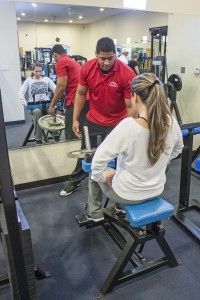 A major concern for many of my female personal training clients as they age is osteoporosis. Osteoporosis is a disease where the bones become weak or brittle due to a loss of bone density. The onset of osteoporosis takes place when the body does not create enough new bone tissue to replace old bone tissue. This can result in bone fractures or broken bones and because osteoporosis develops very slowly it often takes people by surprise. Osteoporosis can have detrimental effects on a person including severe pain, loss of mobility, hunched over posture and depression.
A major concern for many of my female personal training clients as they age is osteoporosis. Osteoporosis is a disease where the bones become weak or brittle due to a loss of bone density. The onset of osteoporosis takes place when the body does not create enough new bone tissue to replace old bone tissue. This can result in bone fractures or broken bones and because osteoporosis develops very slowly it often takes people by surprise. Osteoporosis can have detrimental effects on a person including severe pain, loss of mobility, hunched over posture and depression.
Lifting Weights to Lose Weight
Lifting Weights to Lose Weight
 There is a common misconception, often amongst my female personal training clients, that lifting weights will increase their weight and make their body look bulky. But a strength training program can achieve quite the opposite effect when a person is looking to lose weight and burn fat. An increase in muscle will not only create a leaner, more toned look to the body but will also speed up your body’s metabolism.
There is a common misconception, often amongst my female personal training clients, that lifting weights will increase their weight and make their body look bulky. But a strength training program can achieve quite the opposite effect when a person is looking to lose weight and burn fat. An increase in muscle will not only create a leaner, more toned look to the body but will also speed up your body’s metabolism.
Types of Whey Protein
Types of Whey Protein
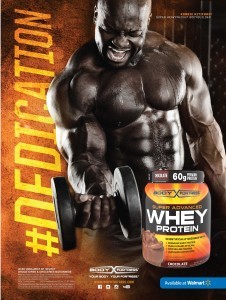 I always have my personal training clients that are strength training or looking to improve their physique use a good quality whey protein. It is a great source of protein due to its biological value meaning that a large portion of the protein can easily be absorbed by the body and used for building muscle.
I always have my personal training clients that are strength training or looking to improve their physique use a good quality whey protein. It is a great source of protein due to its biological value meaning that a large portion of the protein can easily be absorbed by the body and used for building muscle.
Good Fats vs. Bad Fats
Good Fats vs. Bad Fats
 When my personal training clients think about losing weight they think about eliminating fat. There are so many products in the grocery stores that market themselves as fat free. But our bodies actually need fat to survive. Fats are responsible for maintaining healthy skin, providing essential fatty acids for growth and cell development, transporting fat-soluble vitamins and providing energy the body needs to function.
When my personal training clients think about losing weight they think about eliminating fat. There are so many products in the grocery stores that market themselves as fat free. But our bodies actually need fat to survive. Fats are responsible for maintaining healthy skin, providing essential fatty acids for growth and cell development, transporting fat-soluble vitamins and providing energy the body needs to function.
How Much Sugar Is In Your Diet?
How Much Sugar Is In Your Diet?
 Americans consume sugar in their diets in two different ways. There are natural occurring sugars that are found in foods like fruit and milk. Then there are sugars that are added to foods. This can be processed foods like desserts, breads, cereals, and juices to name a few. It can also be sugar, honey, or sweeteners that people add into items like coffee or tea.
Americans consume sugar in their diets in two different ways. There are natural occurring sugars that are found in foods like fruit and milk. Then there are sugars that are added to foods. This can be processed foods like desserts, breads, cereals, and juices to name a few. It can also be sugar, honey, or sweeteners that people add into items like coffee or tea.
Whey protein vs. Soy protein
Protein: Whey vs. Soy
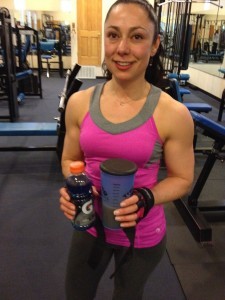 One of the most frequent questions I get asked is: What kind of protein is superior, whey or soy? In order to answer that question you must first have an understanding of the differences between them and how they work in the body.
One of the most frequent questions I get asked is: What kind of protein is superior, whey or soy? In order to answer that question you must first have an understanding of the differences between them and how they work in the body.
Why Do We Need Protein?
What Do We Need Protein?
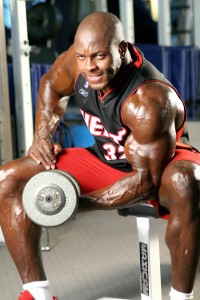 Protein is an essential nutrient our bodies need for survival. It has many vital roles in our biological process. It is responsible for building, repairing and strengthening tissues in the body. Proteins make antibodies to support the immune system. Certain proteins are involved in muscle contractions and movement. Every cell in our body consists of proteins and without protein we could not survive.
Protein is an essential nutrient our bodies need for survival. It has many vital roles in our biological process. It is responsible for building, repairing and strengthening tissues in the body. Proteins make antibodies to support the immune system. Certain proteins are involved in muscle contractions and movement. Every cell in our body consists of proteins and without protein we could not survive.
Muscle Soreness
Muscle Soreness
 Strength training can result in muscle soreness. There are two types of muscle soreness related to working out. The first is acute muscle soreness which occurs during or right after a workout. Acute muscle soreness occurs due to strain put on the muscle and dissipates soon after the workout is over. The second is called delayed onset muscle soreness (DOMS) which can last 24 to 72 hours after a workout. DOMS occurs from microscopic tears to the muscle and is a normal process of muscular growth called anabolism.
Strength training can result in muscle soreness. There are two types of muscle soreness related to working out. The first is acute muscle soreness which occurs during or right after a workout. Acute muscle soreness occurs due to strain put on the muscle and dissipates soon after the workout is over. The second is called delayed onset muscle soreness (DOMS) which can last 24 to 72 hours after a workout. DOMS occurs from microscopic tears to the muscle and is a normal process of muscular growth called anabolism.
How Much Exercise Do You Need Daily To Keep Your Heart Healthy?
How Much Exercise Do You Need Daily To Keep Your Heart Healthy
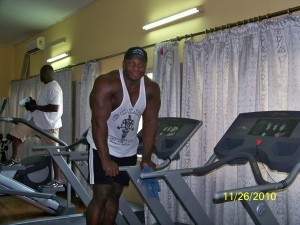
Experts recommend doing some form of moderate aerobic exercise for at least 150 minutes each week(or about 75 minutes of more intense aerobic activity each week).. You can spread the minutes out in any manner which works for your schedule. I recommend my personal training clients do 30 minutes of walking 5 days a week or 25 minutes of running 3 days a week. It really doesn’t make a difference how you split it up as long as you get it done. For more information about health, fitness, and getting in shape or if you’re thinking about hiring a personal trainer, contact us.
Eating To Beat The Winter Blues
Eating To Beat The Winter Blues
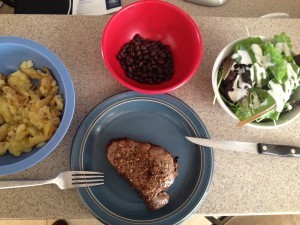 Winter means shorter days and colder temperatures which can lead to a lack of energy and cravings for different types of food. Cold weather can trigger carbohydrate cravings. Often people eat during the winter months to boost their mood and energy turning to refined and processed foods like white breads, rice and sugar. But what you eat can have a huge impact on how you feel. Refined and processed foods not only lack important nutrients your body needs but they also deplete it of energy by causing blood sugar levels to quickly rise and plummet as the body releases insulin to bring glucose levels down to safe levels. These highs and lows can negatively affect your mood and how you feel resulting in mood swings and a lack of concentration.
Winter means shorter days and colder temperatures which can lead to a lack of energy and cravings for different types of food. Cold weather can trigger carbohydrate cravings. Often people eat during the winter months to boost their mood and energy turning to refined and processed foods like white breads, rice and sugar. But what you eat can have a huge impact on how you feel. Refined and processed foods not only lack important nutrients your body needs but they also deplete it of energy by causing blood sugar levels to quickly rise and plummet as the body releases insulin to bring glucose levels down to safe levels. These highs and lows can negatively affect your mood and how you feel resulting in mood swings and a lack of concentration.

